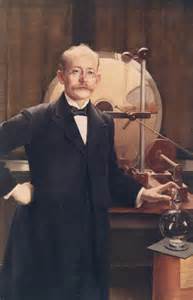ALTA – THE CRADLE OF THE NORTHERN LIGHTS!
Alta has a long and quite interesting Northern Lights history, and was in the 19th century considered to be the best place for studying the Northern Lights. And still today, Alta is a natural choice for anyone that wish to see this natural phenomenon that during dark winter nights lightens up the firmament in shades of green and other colors. Alta, with its dry climate, can provide many, many nights with clear skies – and roads leading in all directions can bring us quickly to places where the sky is clear the few occasions during the season when it is all cloudy here.
-

The French Connection
We can connect Alta’s Northern Lights history to the French Revolution (!), when the Duke of Orleans, Louis Philippe I , had to flee France. In his exile, he visited many places and stayed here in the north for about two years. In the year 1795 he visited North Cape. Later, when he had been elected king of France, he equipped several scientific expeditions that were exploring the Arctic.

-

Bossekop
As part of these expeditions, during the winter 1838/39, a group of scientists came to Bossekop in Alta were they constructed two Northern Lights observatories. Later, during the first International Polar Year the winter 1882/83, 12 different countries set up research stations in the circumpolar region, and the natural choice for Norway’s part was to set up their station in Bossekop, Alta. Also the German Baschin Northern Lights expedition chose Bossekop, Alta as a base for their research in the winter 1891/92, and the first photograph ever been taken of the Northern Lights was taken here on January 5th 1892 by the photographer Brendel.

-

Haldde
It was perhaps not surprising then, that our own professor Kristian Birkeland also chose Alta for his research and in 1899 he erected the world’s first permanent Northern Lights Observatory at the peak of mountain Haldde, 906 meters above sea level with auxiliary station at nearby mountain Talvik. Together with his assistants they wintered 1899/1900. From 1910 to 1913 was professor Størmer in Alta to determine the height of the Northern Lights and for this purpose he photographed thousands upon thousands of images. At the same time also came professor Vegard to Alta, he wanted to study the different colours in the Northern Lights.

-

Haldde
From 1912 the observatory at Haldde was a research station for the Northern Lights, magnetism, for meteorology and ozone, and water vapour. The station was extended with a residential building of four apartments to researchers, assistants and their families. Up there, nearly a kilometer above sea level and one three-hour march to the nearest house down by the fjord of Kåfjord, there was a whole little community where children were born and raised, women held the fort and made great conviviality, researchers and others came and went, and even a cow they had to get fresh milk! Strongly against the recent manager’s will the station was finally closed in 1926, and all activities moved to Tromsø.

-

World War II and Haldde
In the autumn of 1944, as a part of the scorched earth tactics executed by the germain occupying army, all the buildings at Haldde were burned down and destroyed. But, the strong stone built walls of the observatory remained – ready for renovations that begun in the 1980s. And since then it has been possible to visit Haldde where the amazing history of this extraordinary place still lingers.

-

Northern Lights and Pæskatun since 2008
The Northern Lights Observatory at Pæskatun made of ice and snow was built first time in the winter of 2008 in collaboration with Borealis Winter Festival Alta. The astronomer Knut Jørgen Røed Ødegaard came to open the Observatory in the winters of 2009 and 2010, and held spectacular shows. In 2011 astronomer Pål Brekke from Norwegian Space Center, held a very interesting lecture on the Northern Lights, the sun and the universe. On Pæskatun you can now learn about the magical Northern Lights, and not least the unique story related to the Northern Lights research in Alta that started 1838-39 and the Northern Lights Observatory at Haldde. Our Northern Lights Camp is becoming increasingly popular as ‘the place’ to experience the amazing shows at the firmament in a comfortable way. Our Northern Lights Safaris use the site as starting point when we take our guests out for searching the Northern Lights.


